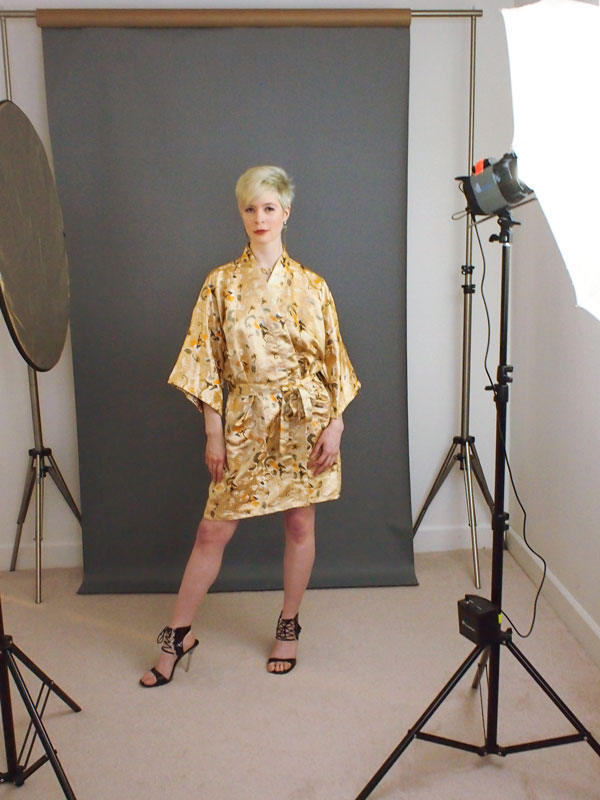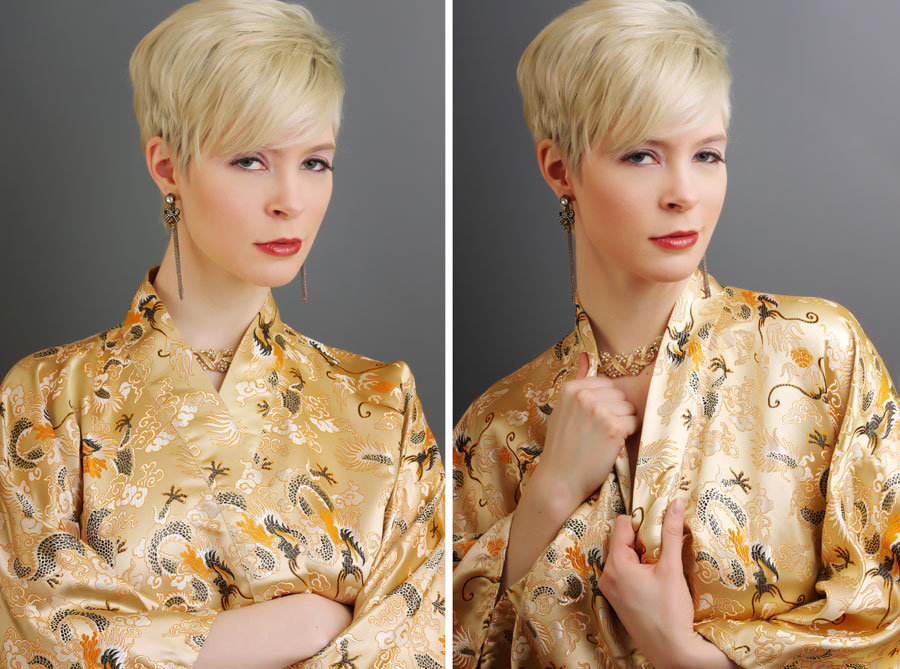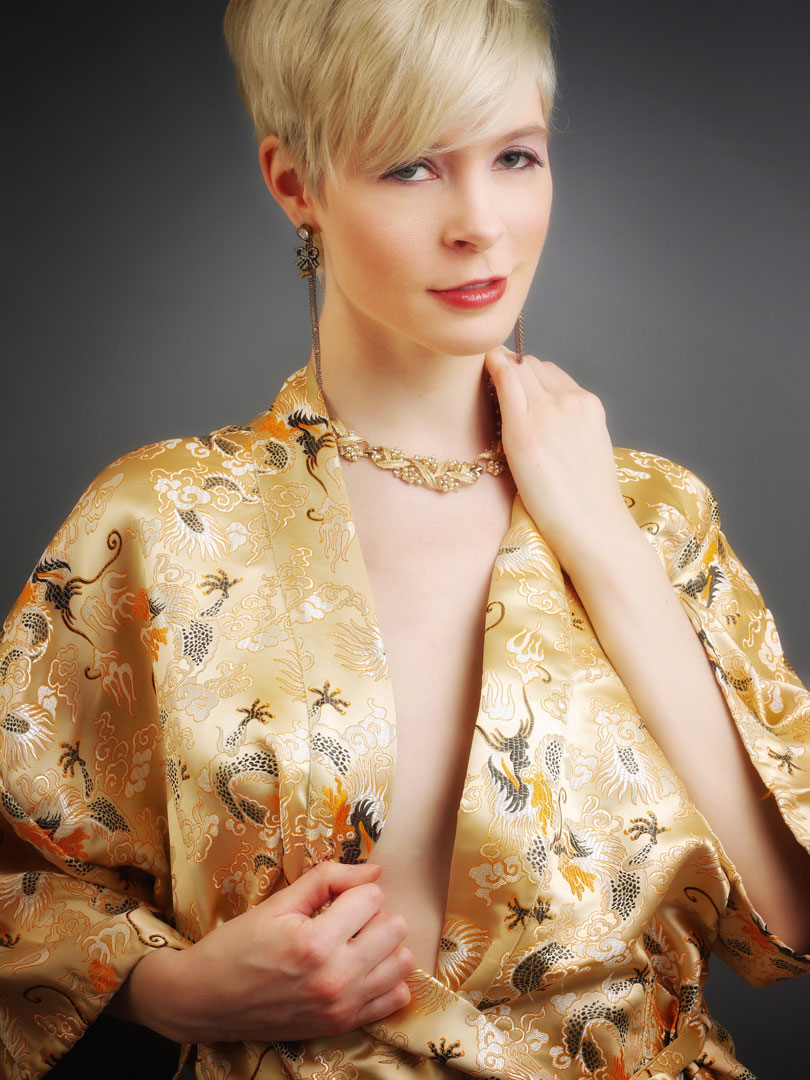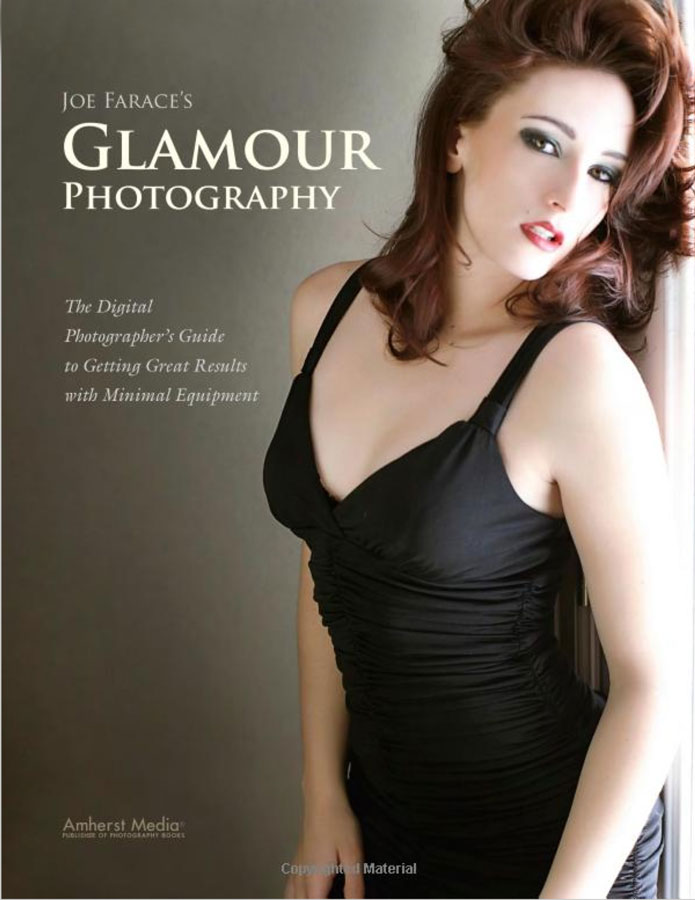Today’s Post by Joe Farace
 Whether shooting portraits with speedlights, power pack and head systems or monolights, one of the best ways to improve the quality of their light is by using a light modifier. And so the inevitable question becomes: umbrella or a softbox? Each device has their advantages and disadvantages and choosing which one is best for you is governed by one important rule: The closer the light is to the subject the softer it is; the further away a light source is the harder it becomes.
Whether shooting portraits with speedlights, power pack and head systems or monolights, one of the best ways to improve the quality of their light is by using a light modifier. And so the inevitable question becomes: umbrella or a softbox? Each device has their advantages and disadvantages and choosing which one is best for you is governed by one important rule: The closer the light is to the subject the softer it is; the further away a light source is the harder it becomes.
Umbrellas provide a broad and soft source of lighting that could, for simplicity’s sake, be considered to emulate natural outdoor lighting. Softboxes come in rectangular, square or octagonal shapes and mimic the kind of soft, directional lighting produced by windows. (And yes, I have an octagonal window in my home’s master bedroom.)
 Because umbrellas create a broad lighting source, they’re easy to use for portraiture. All you have to do is point an umbrella at a portrait subject and bang, zoom nice soft lighting! If you use two umbrellas, you’ll think you’re a lighting genius. And because rain and sun versions have been around for 4,000 years, umbrellas are simple to construct and less expensive to purchase making them perfect for photographer new to using portrait lighting equipment. You can buy an umbrella, like the 45-inch Photoflex White Satin Umbrella for 20 bucks. So they’re cheap, easy to use and produce nice light.
Because umbrellas create a broad lighting source, they’re easy to use for portraiture. All you have to do is point an umbrella at a portrait subject and bang, zoom nice soft lighting! If you use two umbrellas, you’ll think you’re a lighting genius. And because rain and sun versions have been around for 4,000 years, umbrellas are simple to construct and less expensive to purchase making them perfect for photographer new to using portrait lighting equipment. You can buy an umbrella, like the 45-inch Photoflex White Satin Umbrella for 20 bucks. So they’re cheap, easy to use and produce nice light.
Softboxes are available in large sizes that when placed close to a subject produce soft, yet directional light. There are also lots of accessories for softboxes, including grids or louvers, that can make the lighting even across the plane of light. and even a bit more dramatic. What’s the downside? Typically softboxes are not as inexpensive as umbrellas but I found a 32-inch Neewer octagonal softbox on Amazon for $32.99, as I write this.
 Unlike umbrellas which are forgiving on how you use them, softboxes require more effort to balance the main versus fill light (that could even come from an umbrella) that’s often expressed as lighting ratio.
Unlike umbrellas which are forgiving on how you use them, softboxes require more effort to balance the main versus fill light (that could even come from an umbrella) that’s often expressed as lighting ratio.
How I Made These Shots: For both umbrella shots of the umbrella shot, a Flashpoint Monolight was placed at camera right, with a 32-inch round reflector at camera left. The umbrella slot in this particular monolight lacked any kind of lock but the holder, more or less, kept the shaft in place.
For the first set-up (left) the umbrella is in bounce mode, while in the second (right) the bundled 37-inch collapsible translucent umbrella is used in shoot-through mode. The difference between the two setups is subtle but there is a decided directionality to the shoot-though mode that hopefully is visible, depending on how large the images area displayed on your device.
Exposures for the above images were 1/125 sec at f/8 (left) and ISO 200 and 1/125 sec at f/9 and ISO 200 (at right.)T he differences in exposure between the two umbrella setups could have been made dramatically different if I moved the lights between sessions but this way you can see what happens without moving the light.
For the final portrait of Pam Simpson (at right) was photographed with the umbrella set in Shoot-through mode. Camera used was a Panasonic Lumix G5 (before it was converted to infrared capture) with the amazing M. Zuiko 45mm f/1.8 lens with an exposure of 1/125 sec at f/9 and ISO 200. A Savage 5 x 7-foot Infinity grey vinyl background is hung on my already-falling apart JTL background stands.
Ultimately there is no “one size fits all” solution to portrait lighting. Just as you will have to select the right lens and ISO setting for a natural light photograph, when it comes to working with artificial light you need to select the right tool for the project at hand.
My book Joe Farace’s Glamour Photography features information about using minimal equipment for glamour and boudoir photography demonstrating how to shoot portraits in available light situations or using simple lighting gear, including speedlights. New copies of the book are available from Amazon.com for $22.51 with used copies starting at $8.90 as I write this, which is a good a bargain as you’ll find anywhere. The Kindle edition is $19.99 for those preferring a digital format.
